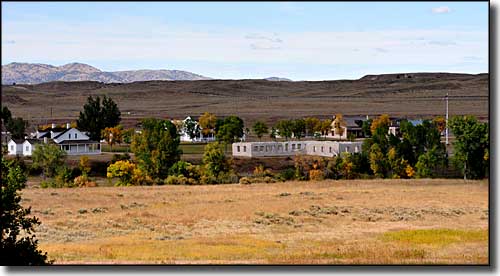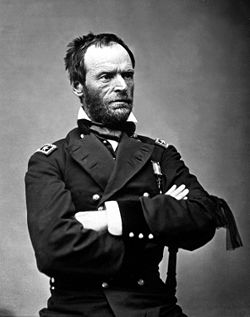
The second removal era commenced in Missouri, Kansas and Nebraska when settlers began moving onto Indian owned lands that were never given up in treaty.
In 1867, federal authorities had
decided to begin a campaign to forcibly remove all Native Americans
from the central section of the Great Plains. The fact that
most of this land was already set aside as Indian land in the Horse
Creek Treaty of 1851 had no bearing on the objectives of the War
Department and the Indian Office, which were united in this
objective.

When asked by members of the
press in Washington D.C. to describe Indian reservations,
General Sherman (rights) responded: "Indian reservations are
parcels of land, set aside for the exclusive use of Indians,
surrounded by thieves."
General Sherman
proposed moving the Sioux north of the Platte, thereby creating a
broad belt of land running east and west "in which lie the two
great railroads, and over which passes the bulk of travel to the
mountain territories…I bet you will submit this proposition to the
honorable secretary of the interior, that we may know that what we
do does not violate some one of the solemn treaties made with these
Indians."
Indian
Commissioner Lewis V. Bogy reminded Sherman that the western lands
"...yet belong to the Indians; it has not been seceded by
them." But for Sherman the realist, theoretical question of
land titles based upon treaty promises were ephemeral
concerns. He had developed the pragmatic mind of the military
achiever and viewed the military as the right tool for solving the
nation's 'Indian problem."
Related People
Related Events
Related Flashpoints